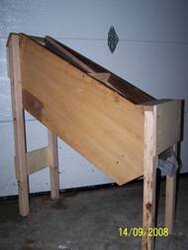offingmoot
Member
to reiterate what steamguy said.....i consider the need to reduce fines to be a great preventative measure if deemed necessary or not. For the small amount of cash it gives me piece of mind
but the screening solution takes care of several objectives at once
my fiancee is very alleregic to dust
1.screen the fuel to eliminate fines/dust for the girl and stove
2.move the pellets from basement to main floor w/o lifting a single pellet by hand
3.provide a small container w/in feet of the stove with pellet fuel clean and dry and ready to burn....good for the girl to fill up as well as me
but the screening solution takes care of several objectives at once
my fiancee is very alleregic to dust
1.screen the fuel to eliminate fines/dust for the girl and stove
2.move the pellets from basement to main floor w/o lifting a single pellet by hand
3.provide a small container w/in feet of the stove with pellet fuel clean and dry and ready to burn....good for the girl to fill up as well as me


